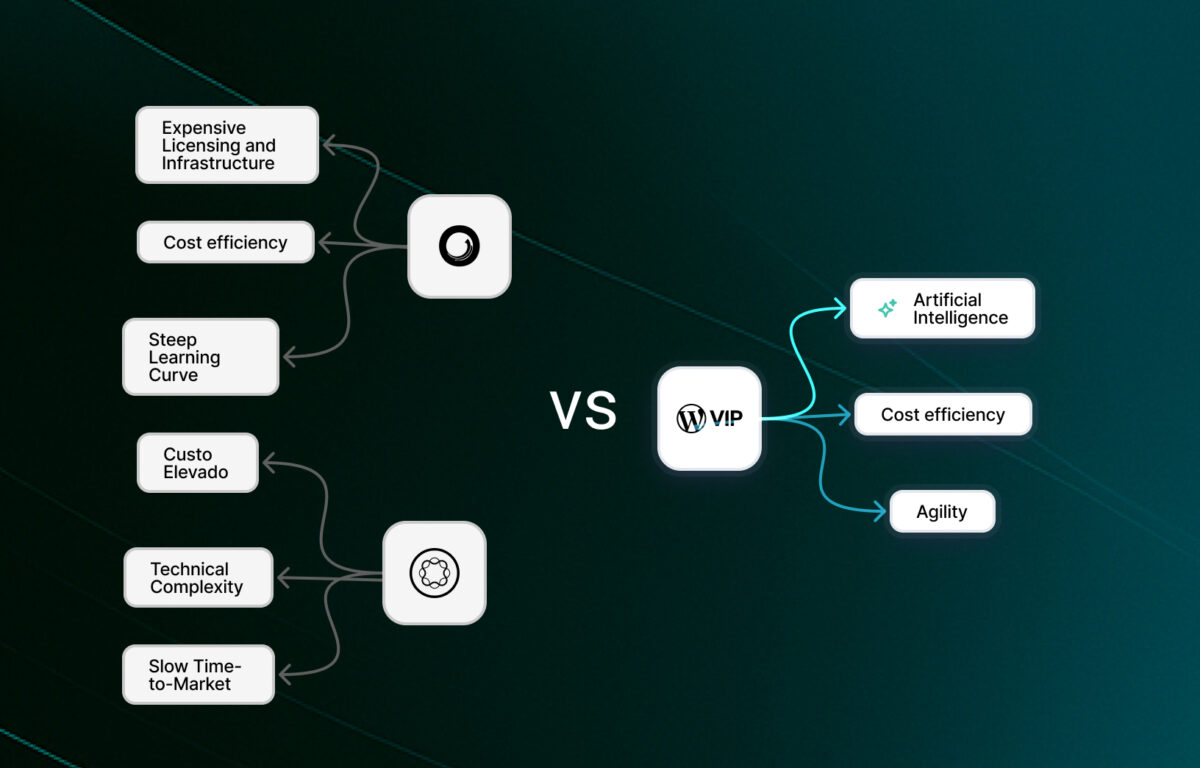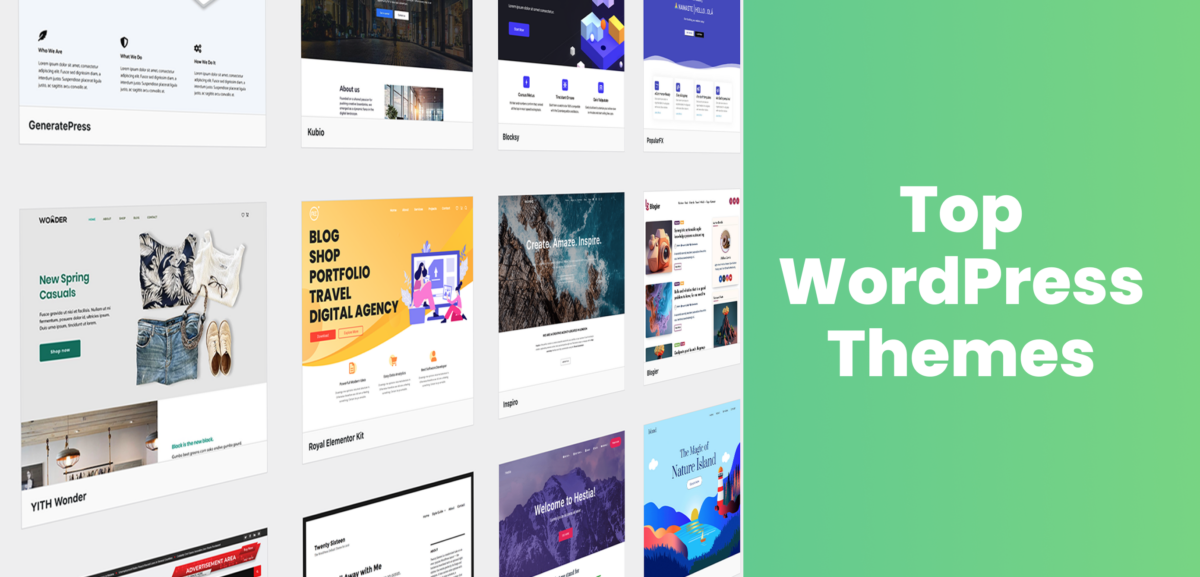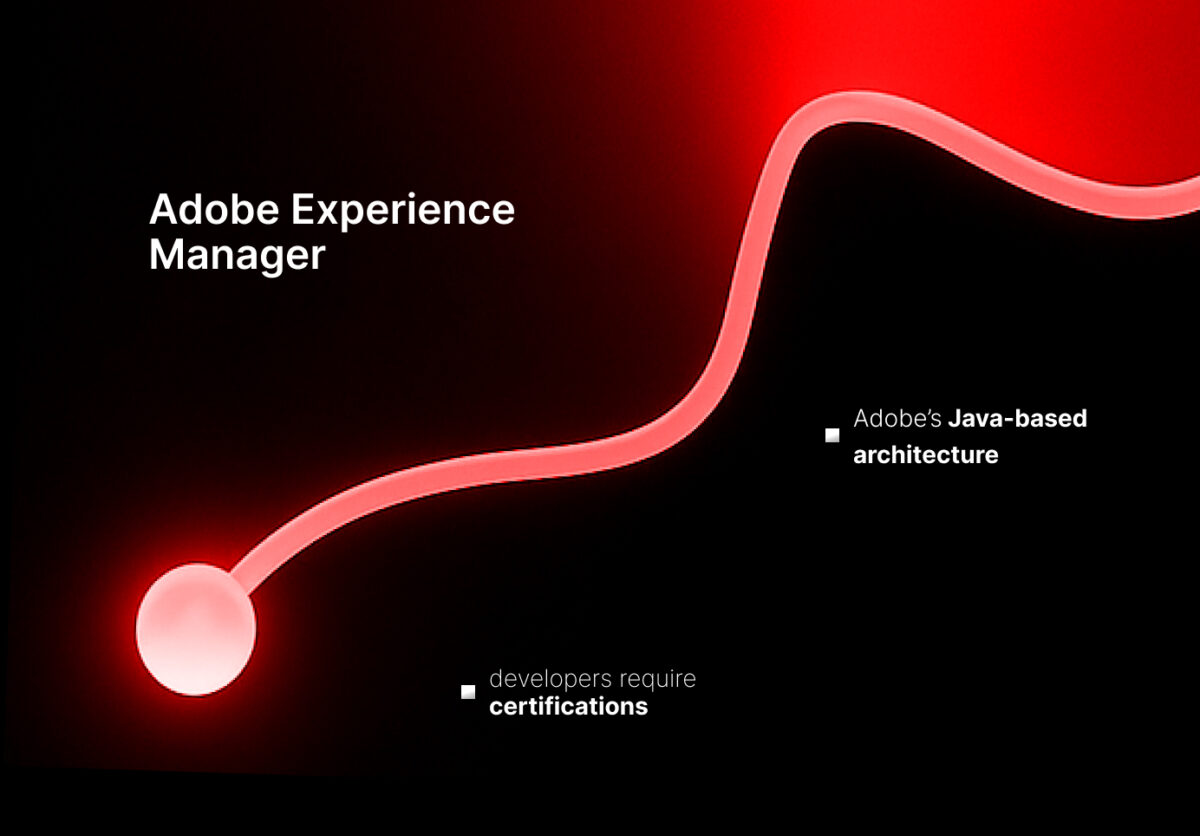Why the Future of Enterprise CMS is Open, Headless, and AI-Enabled
Eddie Wise

In 2025, the enterprise content landscape is undergoing a massive shift. Legacy CMS platforms like Adobe Experience Manager (AEM) and Sitecore, once considered safe investments, are now being reevaluated in favor of systems that prioritize flexibility, speed, and innovation. The next generation of content management is here—and it’s open, headless, and AI-enabled.
This article breaks down why these three characteristics are no longer nice-to-haves, but essential for organizations that want to scale without friction and future-proof their digital infrastructure.
The Rise of Open Architecture in the Enterprise
Open-source platforms like WordPress VIP are redefining what’s possible for enterprise teams. Unlike closed ecosystems (AEM, Sitecore), open architectures offer:
- Vendor independence
- Global talent availability
- Faster innovation cycles
- Lower total cost of ownership
Enterprise buyers increasingly value platforms that integrate freely with modern tech stacks rather than force them into a locked suite of tools. With open-source foundations, developers can customize experiences, integrate APIs, and ship updates faster—with full control over their digital environment.
Additionally, open-source platforms enable organizations to stay current without being beholden to a single roadmap or vendor dependency. With enterprise-ready security and governance layers—like those provided by WordPress VIP—open-source can now meet even the strictest compliance and performance requirements.
Why Headless Architecture Is Now a Necessity
A headless CMS decouples content creation from how and where that content is displayed—essential for omnichannel brands operating across web, app, mobile, voice, and more.
Key advantages:
- Deliver content to any platform (to almost anywhere) via APIs
- Build with modern and fast front-end frameworks (React, Next.js, Vue)
- Iterate and launch digital experiences without back-end dependencies
Legacy systems like AEM and Sitecore have struggled to retrofit headless functionality, often requiring extensive development effort and workarounds. In contrast, WordPress VIP was built to support headless and hybrid architectures from the start—helping teams build faster while managing content in a centralized, marketer-friendly backend.
This separation of concerns means creative and development teams can work in parallel, speeding up innovation cycles and reducing bottlenecks. For large organizations managing multiple brands or markets, headless architecture enables tailored, local experiences delivered from a single content hub.
AI-Powered Content Workflows Are a Game Changer
AI is no longer experimental—it’s foundational. In the CMS space, artificial intelligence is already reshaping how enterprise teams:
- Automate formatting, tagging, and publishing
- Generate content insights and performance predictions
- Improve SEO with AI-assisted meta data
- Personalize user experiences dynamically
WordPress VIP includes AI capabilities out of the box, including NLP-driven content suggestions, automated image generation, auto-tagging, and integration with platforms like Parse.ly for real-time analytics. These features streamline operations and empower marketers to move faster—with less developer support.
More importantly, AI allows content teams to work smarter. Editorial calendars can be optimized based on performance data, and repetitive tasks like alt-text generation, categorization, and even topic ideation can be handled by intelligent systems. This frees up teams to focus on strategy and storytelling, rather than logistics.
Legacy CMS Platforms Can’t Keep Up
Closed, monolithic platforms struggle to match the agility and intelligence that modern enterprise teams require. AEM and Sitecore demand:
- Lengthy implementation cycles
- High developer overhead
- Costly licenses and maintenance
- Manual updates and slower go-to-market speeds
Even when these systems offer AI or headless options, they come as premium add-ons with steep configuration requirements. As digital velocity increases, this friction becomes unacceptable.
The operational cost of sticking with legacy systems is more than financial—it’s about lost time, missed opportunities, and slowed innovation. In a world where content is a competitive advantage, delay is a liability.
WordPress VIP provides a unified platform—AI, scalability, and flexibility baked into a managed open-source ecosystem.
Future-Proofing Starts with the Right Stack
Enterprises need to move fast, operate lean, and innovate continuously. That’s only possible with a CMS built for modern digital experiences. The future is clear:
- Open for integration and agility
- Headless for omnichannel delivery
- AI-enabled for smarter, faster publishing
WordPress VIP leads in all three areas—and helps you build an infrastructure ready for whatever the next decade brings. Whether you’re scaling your content footprint, integrating with the latest martech, or looking to deliver personalized experiences across channels, choosing the right CMS isn’t just a tactical decision—it’s a strategic one.


